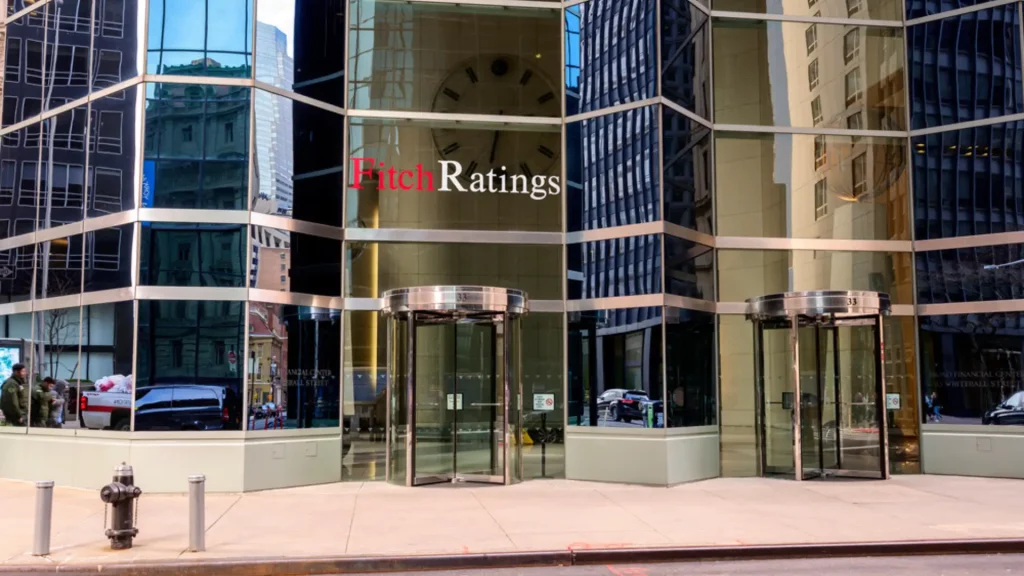Fitch’s downgrade report on America is the blended rating of the trio of credit rating agencies
Fitch Ratings Agency downgraded the long-term credit rating of the United States from AAA to AA+ this Tuesday. It stated that increasing mountains of debt and financial weakness could bring the nation to its first possible debt default. It cited that they had been noticing a steady deterioration in governance over the last 20 years.
Fitch said in a statement that the continuous political debate and last moment conclusion on the debt ceiling had shaken confidence in financial management. The government needs appropriate modules to meet the medium-term challenges and should resolve its complicated budgeting system.
This is the second time Washington has faced a downgrade. The second one came two months after a narrow escape from a debt default. Government officials took weeks to negotiate a debt ceiling deal. The US almost reached the cap of its borrowing capacity this January. Congress somehow managed to conclude a last-minute deal to temporarily suspend the debt ceiling, giving a sigh of relief to the whole world.
Fitch Ratings met with officials of the Biden administration to stress upon Jan 6 event as a matter of utmost concern to the government of the United States. The credit rating agency didn’t highlight the insurrection in the latest published downgrade report.
The US Treasury is the safest haven for investment, but the downgrade has raised suspicions about its ability. This downgrade will affect almost every section of the economy, from mortgage rates for American houses to the contracts outsourced to other countries. This could even trigger a sell button for the treasuries, resulting in a yield spike that acts as the basis for interest rates on several loans.
Fitch’s downgrade report on America is the blended rating of the trio of credit rating agencies (Moody’s and S&P Global Ratings). Analysts have warned that this move could bring down the investors in US government debt. Those investors that look for creditworthiness will now look for other avenues to allocate funds, whilst some investors that are restricted due to various reasons will have to stay with them.
This could increase the cost of borrowing for the US government, especially at a time when interest rates are piercing through the atmosphere. This could be an alarming call for the forthcoming downfall considering the massive Treasury market and the decreasing demand from investors for US debt.
The Biden administration bashed the Fitch report, arguing that the downgrade is irrelevant to the overall health of the US economy. Treasury Secretary Janet Yellen called out that the change in ratings doesn’t change the outlook of Americans, investors, and the whole world. She added that the US Treasuries still maintain the composure of the world’s safest asset.
Karine Jean-Pierre, the White House press Secretary said they disagree with the downgrade announcement and raised questions on Fitch’s credit rating methodologies.
Chuck Schumer, Senate Majority Leader, blamed the Republicans for the downgrade. He stated that their careless manoeuvring with the default had caused serious negative impacts on the country. He asked the Republicans to stop using the debt limit as a political tool.
In 2011, when the S&P Ratings downgraded the US debt, a massive sell-off was witnessed in the securities market and an uprising of the bond yields. Till then, the US debt had a perfect AAA rating given by Moody’s Investors Service back in 1917. The recent change in ratings brings it equivalent to Austria and Finland.
In June, both parties agreed to a bipartisan deal to suspend the debt ceiling temporarily with some conditions. The deal sighted a $1.5 trillion reduction in federal spending over the span of a decade. This meant squeezing funds for next year’s expenditure and limiting expenses by 1% growth in 2025.
Policymakers actually didn’t draft any significant condition that would seriously reduce expenditure. The White House opted out from making spending cuts in politically sensitive avenues and costly affairs like social service, military, and retirement. The insignificant spending cut stills keep the national debt at a height of $32 trillion, more than the combined debt of the next four highest debt countries, including China ($14 trillion), Japan ($10.2 trillion), France ($3.1trillion) and Italy ($2.9 trillion). This debt is calculated to surpass $50 trillion by the end of this decade.
Alec Phillips, the chief US political economist at the Wall Street bank Goldman Sachs said that the downgrade mainly highlights the flaws in governance endeavours and the medium-term economic struggles and has no connection with the latest financial information. He stated that the Treasuries investors should be the main concern who might have to unwillingly sell their holdings due to a rating change. Otherwise, the financial markets will not have a major impact.
